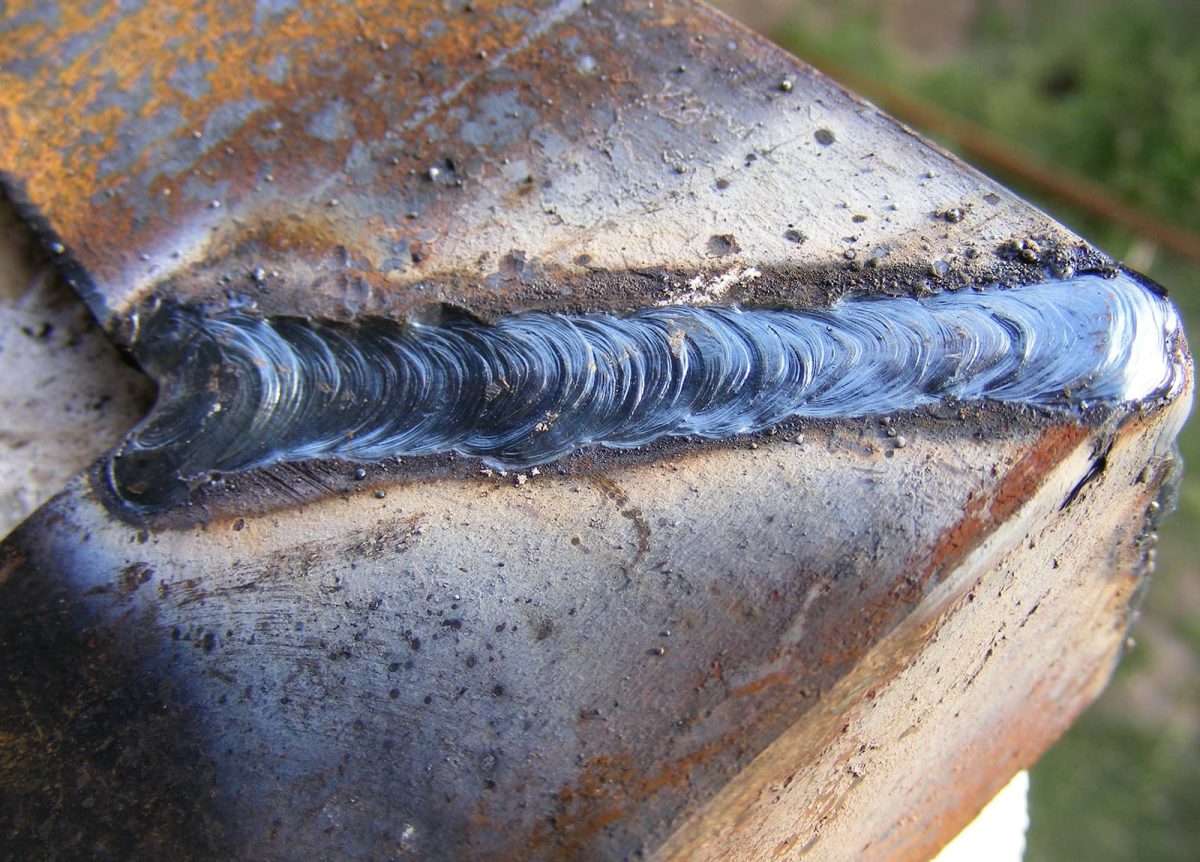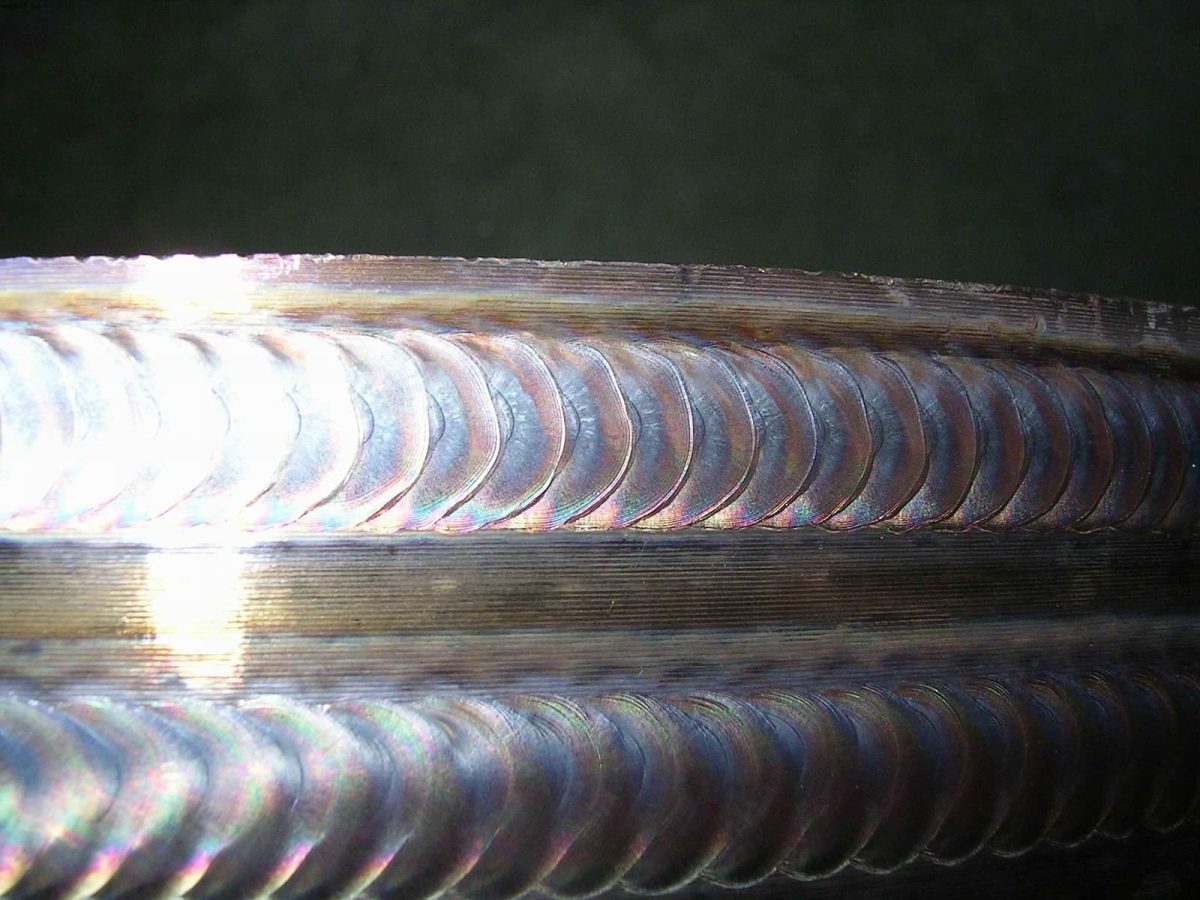For a long time, the traditional design principle for welded structures was mainly based on strength design.
In real welded structures, there are three types of matching relationships between the weld and the base material in terms of strength: the weld strength is equal to the strength of the base material (equal strength matching), the weld strength exceeds the resistance of the base material (higher resistance match, also known as high resistance match) and the strength of the weld is less than the resistance of the base material (lower resistance match).
From the perspective of structural safety and reliability, it is generally necessary for the weld strength to be at least equal to the strength of the base material, which is known as the “equal strength” design principle.
However, in actual production, welding materials are often selected based on the strength of the deposited metal, which is not equivalent to the actual strength of the weld.
Deposited metal is not equivalent to weld metal, especially when welding materials are used for low-alloy, high-strength steels, where the strength of the weld metal is often much greater than that of the deposited metal.

As a result, there may be a nominal “equal force” but a real “greater force” result.
There is no consensus on whether the combination of superior strength is always safe and reliable, and there are some doubts.
In the bridge project over the Jiujiang Yangtze River in China, the “upper strength value” of the weld is limited to no more than 98 MPa. American scholar Pelini proposed that to achieve conservative structural integrity goals, welds with strength equivalent to or less than the base material at 137MPa (i.e., low-strength match) can be used. According to the research results of Japanese scholar Sato Kunihiko and others, the low-resistance combination is also viable and has been applied in engineering.
However, Belgian scholar Soete and Chinese scholar Zhang Yufeng hold the view that the combination of superior strength must be advantageous.
Clearly, there is still a lack of sufficient theoretical and practical basis for the design principles related to welding strength matching that affect the safety and reliability of welded structures, and there is no unified understanding.
In order to determine more reasonable design principles for welded joints and provide a basis for the correct selection of welding materials, Professor Chen Bolin and others from Tsinghua University undertook the National Natural Science Foundation research project “Research Theoretical on High Strength Steel Weld Toughness Matching.
The research content of the project includes the fracture resistance of high-strength steel joints with yield strength ratio of grade 490MPa, the fracture resistance of high-strength steel joints with yield strength ratio of grade 690~780MPa , the tensile strength of non-welded joints, the deformation behavior of the top of specimens with deep notches and END tests on welded joints.
A large number of experimental results have shown that:
For high-strength, low-yield steels with a tensile strength of 490MPa, it is advantageous to use welding materials with a certain toughness and appropriate upper strength.
If we consider factors such as welding processability and use adaptability, it is more reasonable to select welding materials with a certain toughness and actual “equal strength”.
The fracture resistance and behavior of welded joints of this type of steel depend on the combined effect of the strength and ductility of the welding material.
Therefore, the design of welding structure based on strength considerations alone, without taking into account toughness, cannot reliably guarantee its safety in use.

For high-strength steel with a yield strength ratio of 690 ~ 780 MPa, the fracture performance of its welded joints is not only related to the strength, toughness and plasticity of the weld, but also limited by the heterogeneity of the welded joint.
Excessive or low weld strength is not ideal, while joints that have a close strength match have the best fracture performance. Therefore, designing welded joints according to the actual principle of equal strength is reasonable. Therefore, there must be upper and lower limits to the strength of the weld.
The strength matching coefficient (Sr) is the ratio of the tensile strength of the deposited metal of the welding material to the tensile strength of the base material and can reflect the heterogeneity of the mechanical performance of the joint.
Experimental results show that when Sr≧0.9, the strength of the welded joint can be considered close to the strength of the base material. Therefore, in production practice, the use of welding materials that reduce strength by 10% compared to the base material can ensure that the joint meets the design requirements of equal strength.
When Sr≧0.86, the joint strength can reach more than 95% of the strength of the base material. This is because the higher strength of the base material restrains the weld metal, thus improving the strength of the weld.
The yield strength ratio of the base material has an important influence on the fracture behavior of welded joints. J.
Joints with lower yield strength ratings of the base material have better resistance to brittle fracture than joints with higher yield strength ratings of the base material. This indicates that the plasticity reserve of the base material also has a significant impact on the brittle fracture resistance of the joint.
The deformation behavior of the weld metal is influenced by the correspondence of mechanical properties between the weld and the base material.
Under the same tensile stress, the weld deformation of the higher strength joint of steel with low yield strength ratio is larger, while the weld deformation of the low strength joint of steel with high yield strength ratio is smaller. The crack opening displacement (COD value) of the welded joint also shows the same trend, indicating that the higher strength steel joint with low yield strength ratio has the advantage of easy yielding at the crack tip and greater deformation at the tip of the crack.
The brittle fracture resistance of welded joints is closely related to the heterogeneity of the mechanical performance of the joint. It is not only determined by the strength of the weld, but also limited by the toughness and plasticity of the weld. The selection of welding materials should not only ensure that the weld has adequate strength, but also ensure that the weld has sufficient toughness and plasticity. In other words, the correspondence between weld strength and toughness must be well controlled.
For high-strength steel, achieving an equal strength match between the weld metal and the base material presents significant technical difficulties. Even if the weld strength reaches the same strength, the plasticity and toughness of the weld may be reduced to an unacceptable level, and the crack resistance may also decrease significantly. To avoid welding cracks, the construction conditions must be extremely strict and the construction cost will increase greatly.
To avoid sacrificing the overall performance of the structure by seeking strength alone and improving economic reliability in construction, it is necessary to reduce strength and adopt a low strength matching scheme.
For example, Japan's NS110 submarine steel has a yield strength greater than or equal to 1098MPa, and the yield strength of the deposited metal of the corresponding welding rod and gas shielded welding wire must be greater than or equal to 940MPa, with a yield strength matching coefficient of 0.85.
After using low-strength matching welding materials, the carbon content and carbon equivalent of the weld can be reduced, which will improve the toughness and crack resistance of the weld, making welding construction more convenient and reducing costs of construction.
Furthermore, some test data from Japanese scholar Kunihiko Sato shows that as long as the strength of the weld metal is not less than 80% of the strength of the base material, the joint can still be guaranteed to be as strong as the base material. .
However, the overall elongation of the joint with low strength welds will be slightly lower. Under fatigue loading, if excess weld height is not removed, fatigue cracks will occur in the fusion zone. However, if excess weld height is removed, fatigue cracks will occur in the low-strength weld.
Therefore, when using low-strength welds, it is necessary to carry out some experimental work based on specific conditions.
























































